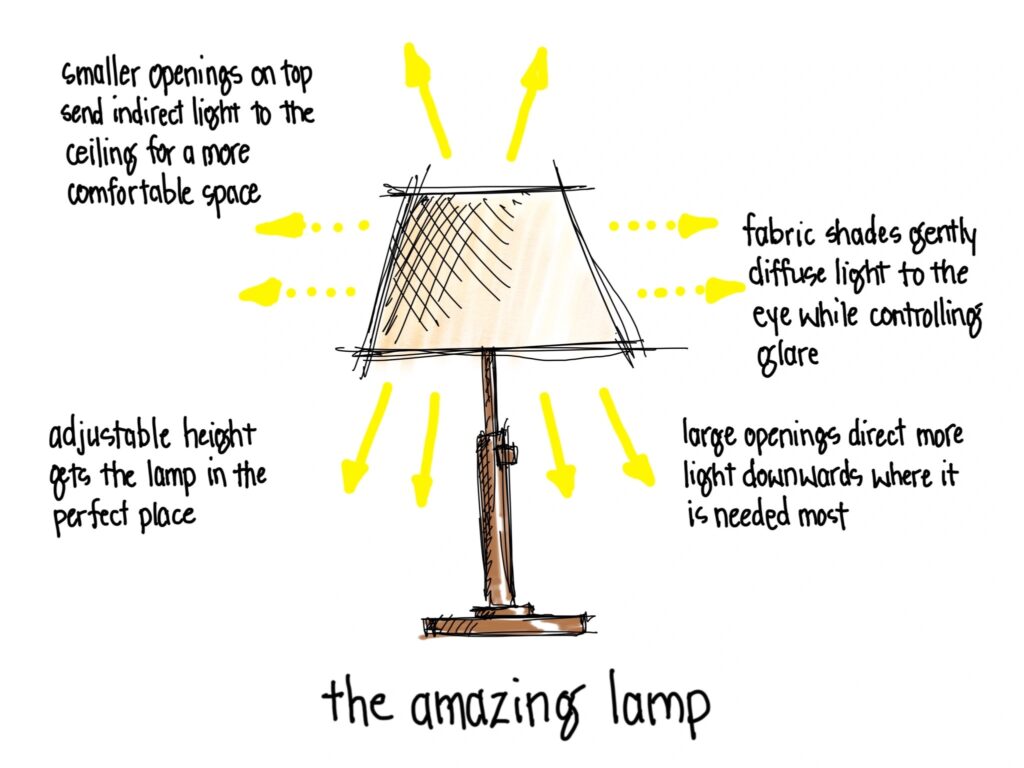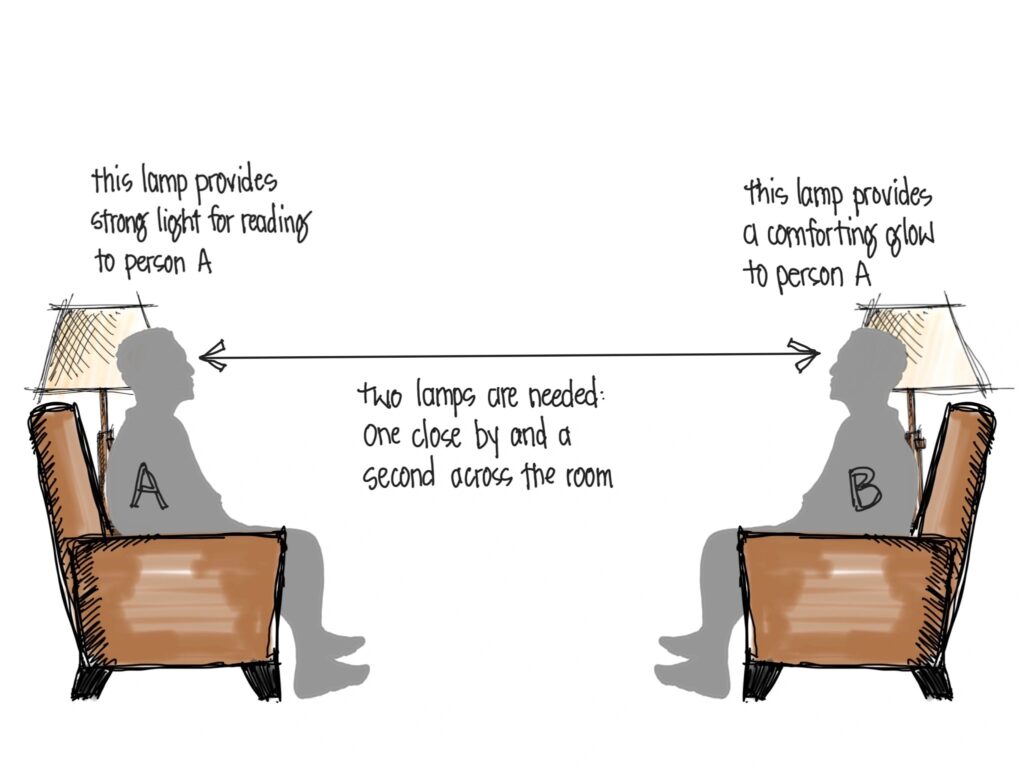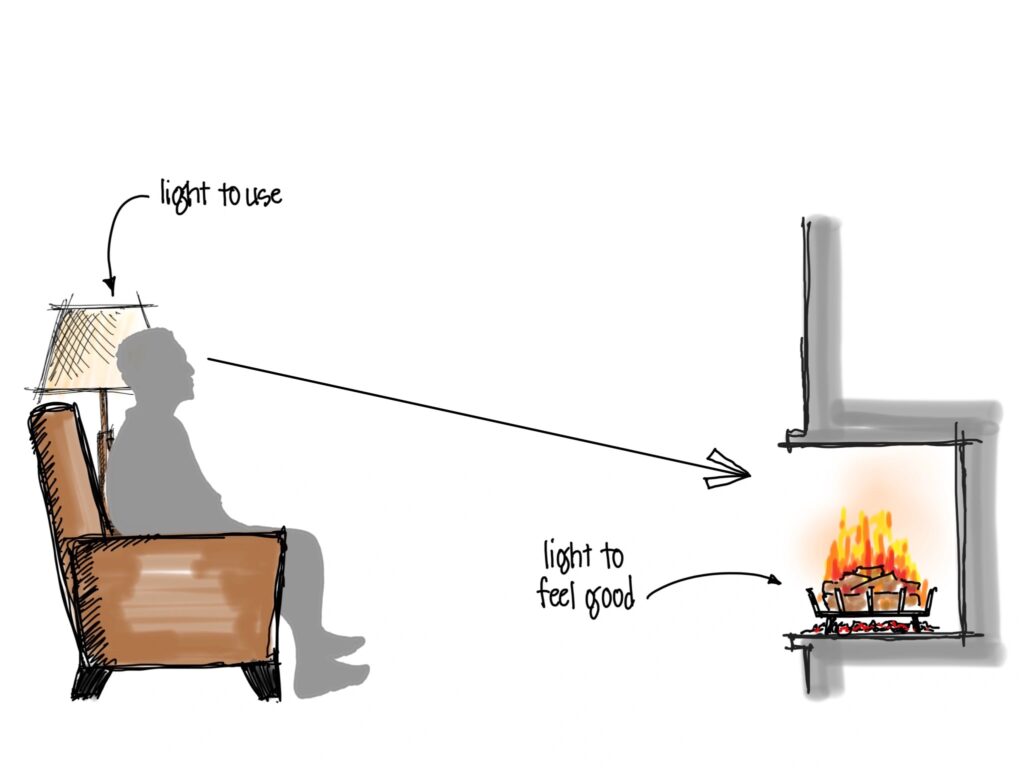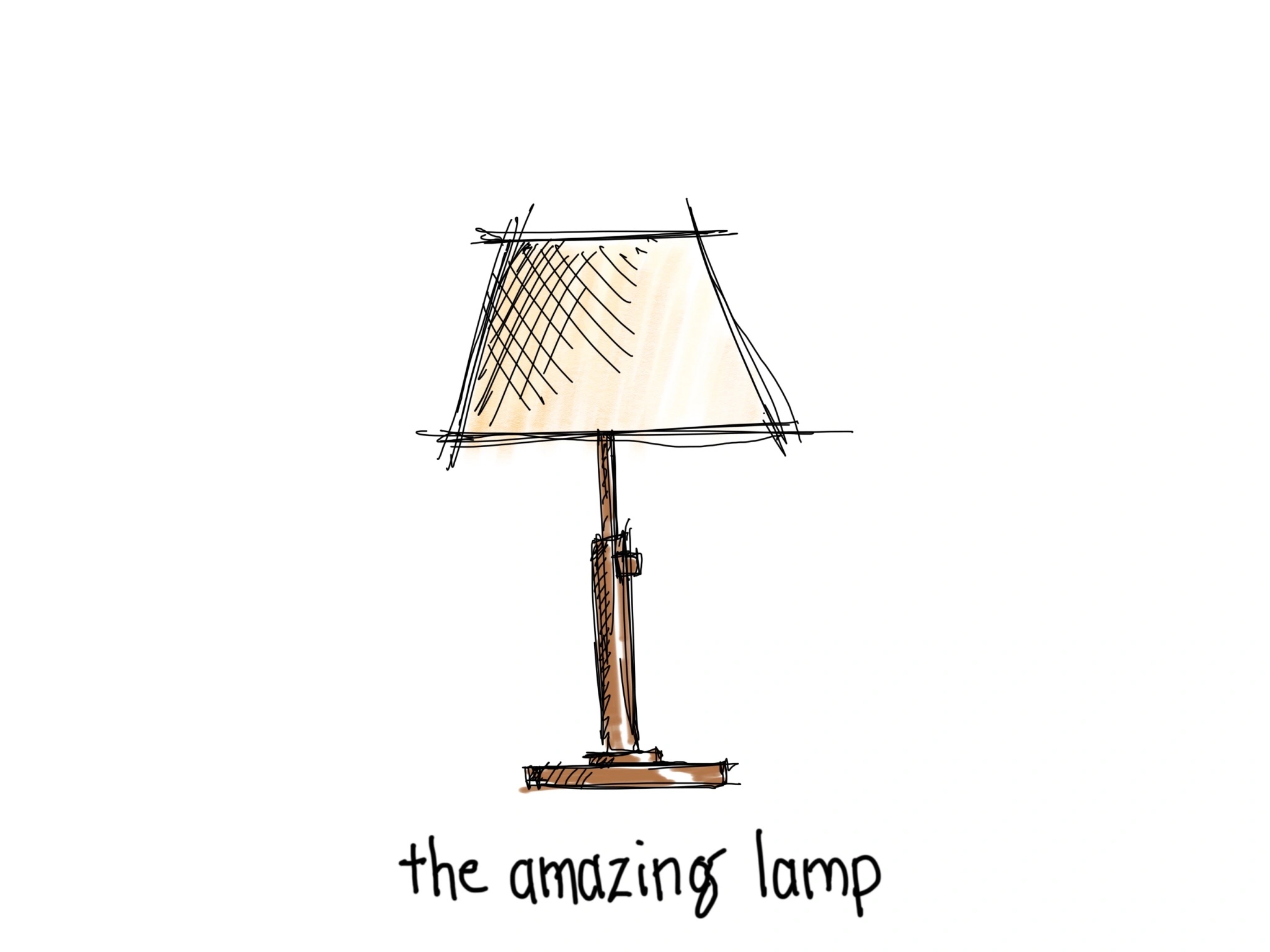If the idea of ripping into a finished ceiling, pulling new wires, installing fixtures, repairing drywall, and repainting is discouraging you from improving lighting in your home, I sympathize. When I was a tad younger (okay, twenty years younger), I thought nothing of crawling through my attic, hacking away at decades old plaster, and pulling thousands of feet of Romex every which way.
Fast forward to my late forties and, while I still get my hands dirty on a regular basis, I have a greater appreciation for plug in solutions that require no wiring, no crawling, no hot attics or spidery crawlspaces, and that can be implemented in five minutes or less.
When it comes to most living rooms, plug in solutions can deliver just about all the light- and kinds of light- you need.

You need a couple of kinds of light in a living room to make the space both comfortable and functional. Overhead lights can provide some of the light you want, but too often become the only source of light in room and deliver as much or more uncomfortable glare as usable light. Soft light on faces, diffuse indirect light bounced off the ceiling, and strong clear light on our magazine or book are critical to comfort and none of these come from fixtures on the ceiling.
Lamps, on the other hand, can deliver all of this and more, when the lamp is carefully selected. The most common lampshades are designed to push more light downwards through a large opening; this light is perfect for reading a book, attacking a crossword puzzle, or playing a board game. The shade keeps the strong light out of your eyes, minimizing glare, which in turn makes it even easier to read.
A smaller opening at the top of the lamp shade lets light escape up to the ceiling, where it is diffused and spread out over the entire room, giving everything a soft glow. This indirect light is perfect for walking around and relaxing your eyes.
Soft fabric shades, often white or linen in color, conceal the glare of the bare light bulb and softly transmit light onto the faces of loved ones. This light is critical to communication, both verbal and visual, and key to making people feel comfortable and welcome. There is one trick to this kind of light- if the lamp is next to you, where it needs to be to put light on your book, then you probably won’t see much of the shade in your line of sight. To get the good feelings from lamps, you’ll need a lamp across from you. Let’s call this Complimentary Lamps.

In the example above, two chairs are flanked by lamps. Person A gets great reading light from their lamp but also benefits from the comfort provided through the soft shade of the lamp next to person B. Both lamps add light to the ceiling, providing a balanced indirect wash of illumination. The setup is complimentary, meaning both people will have all the kinds of light they need. But what happens when there is not a chair across from the couch?

We have some historical basis for replacing the complimentary lamp: fireplaces. In years past, seating was deliberately arranged to face the heat of the fire for warmth- and for its light. Today, we may not need the fire for heat, but the light from it can be complimentary to our own nearby lamp. The end result is similar to a lamp: soft diffuse light that is comforting to see. There are few things more relaxing to me than tending a fire on a cold winter’s evening. When summertime comes, however, I am less inclined to heat up the house.

Complimentary light can come in many varieties, not just another table lamp or a crackling fire. I love the warmth of a glowing object- often called an accent lamp- that mirrors the beauty and sparkle of a candle. Candles work, but the lazy part of me loves flipping a switch and getting a nice glow in the room so easily.
If you have a living room with only overhead lighting, you can make a huge difference without hiring an electrician. Grab some adjustable-height table or floor lamps and a few accent lamps. Make sure you have good strong light over your shoulder and a soft gentle light across the room from you. The combination will function better- and feel amazing.
See one of my previous living rooms before and after plug in solutions like those above.
